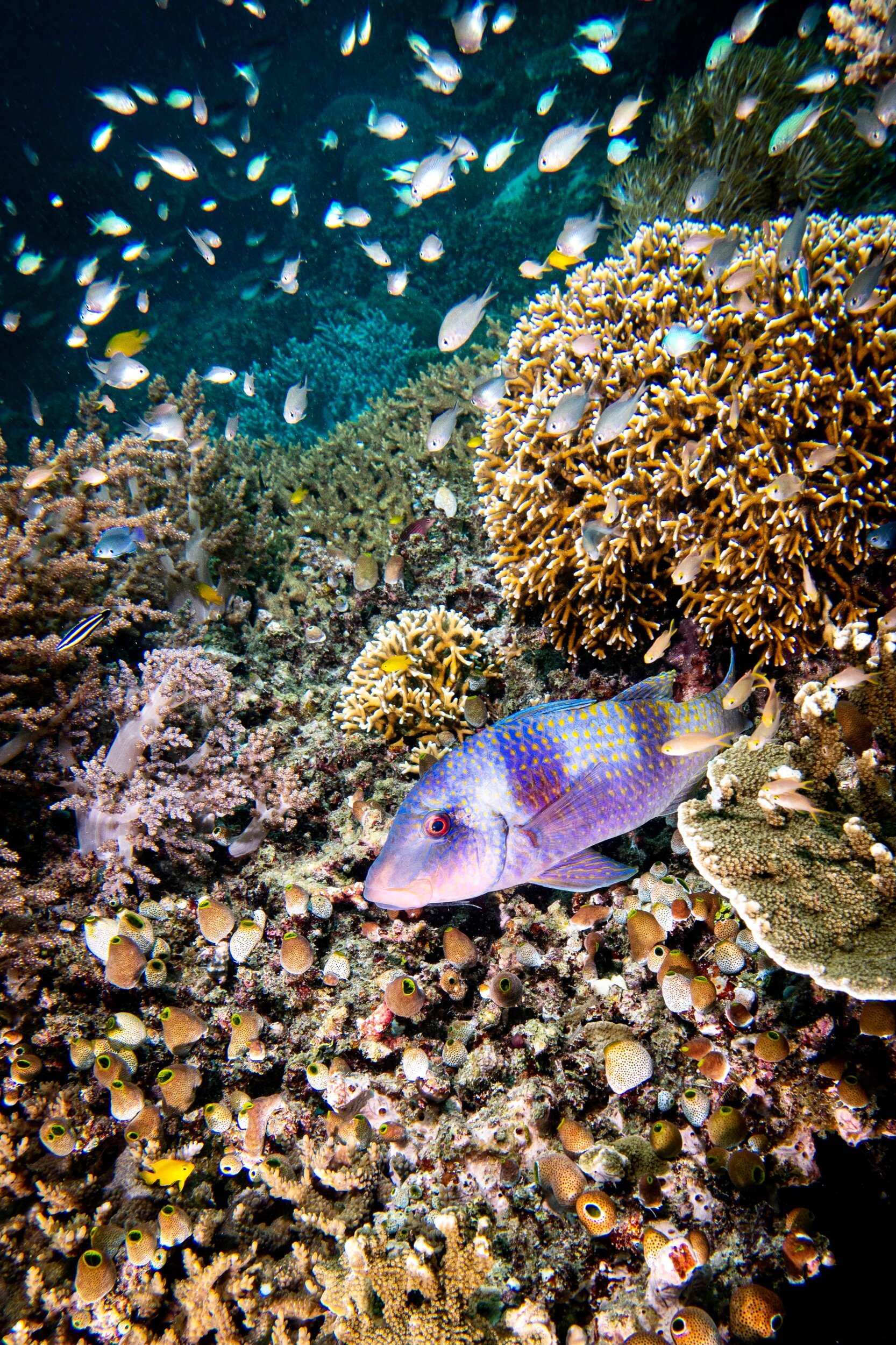Finding Nemo (Day 177)
We found little Nemos (clownfish / anemonefish) all over the place.
Clownfish live with sea anemones in a great example of symbiosis, a relationship that benefits both species.
Although the anemone looks like a plant, it is an animal that can move (slowly) and eats meat! It is cousins with the jellyfish, and its arms are covered in a powerful poison. It poisons its prey and then uses its arms to move the prey into its mouth. And, weirdly, its mouth is also its bottom - so it releases waste from the same place that it eats!
The clownfish is immune to the anemone’s poison, so the clownfish spends most of its time hiding among the anemone’s tentacles for protection. In return, the clownfish removes parasites and attracts food to the anemone.
Here, you can see the clownfish darting in and out of the sea anemone’s tentacles.
Unlike the movies, it turns out that there are about 30 species of clownfish.
*****
NIGHT DIVE
We did a night dive, which was full of murky blackness, strange nocturnal animals, and periodic vibrant colors. Sometimes, without the sun to guide you, you couldn't tell which way is up!
Once you got close to something, the colors would really pop! Coral polyps open to feed at night, creating more intense colors.
Giant Clams like this can weigh 500 pounds.
The night brings different creatures out on the reef, such as this Tasseled Wobbegong Shark. It is very well camouflaged…
Do you see it? Here it is looking straight at us. It has bright white eyes, and it looks like it has a scraggly beard on its face.
The Wobbegong can’t see well, so it uses the tassels to sense movement. And then it pounces! It can even dislocate its jaw and swallow a fish bigger than itself. How cool would it be if you could eat a pizza bigger than you!?!
There are also lots of little animals that come out, like this teeny lobster.
We loved this little gal with her many arms! (You will also see that the night water is full of little animals that float and zip about and are attracted to our flashlights.)
Watch as the giant clam closes its mouth as we get close to it.
*****
CORAL, ETC.
Raja Ampat has so many beautiful corals. It has the most different types of hard coral anywhere — over 500 species, more than 7x as many as in the entire Caribbean. Pretty amazing for a place we had never heard of before planning the trip!
Many corals only grow 1 centimeter a year. That means that a coral as tall as Hazel could be 140 years old! Some big corals can be 1000’s of years old.
The corals were really beautiful up close.
One of our favorite sights were the Christmas Tree Worms. Watch them pop their “trees” in as we get close…
Christmas tree worms burrow into the coral to make a home. They extend out their “tree” to breathe and to catch teeny bits of floating food.
*****
These things that look like yellow/purple heart valves are called Sea Squirts.
Like frogs and butterflies, Sea Squirts are metamorphic animals, changing form as they develop from a child into an adult. They start looking like a tadpole at birth, but they turn into this tube shape as an adult. The coolest part is that after the tadpole baby finds a good rock to attach to, IT EATS ITS OWN BRAIN! The Sea Squirt absorbs its own brain, eye, spinal cord, etc. because it won’t need them anymore in the tube form. It just sits there and gets nutrition as water flows through it.
Many times, the coral “show” was so dazzling that you didn’t need to see fish at all.
*****
EVEN MORE FISH
A Humphead Wrasse can weigh 400 pounds! Its eyes can rotate 360 degrees, so they are hard to sneak up on.
Unicorn fish. It turns out that unicorns are real, at least under the sea.
This is called a Sweetlips.
Huey, age 5, swimming with a manta. Mantas are big, but they are not dangerous. They are filter feeders, so they don’t really have normal teeth.
Here are some fun facts about mantas:
Mantas are huge. An oceanic manta can be 21 feet wide and weigh 3600 pounds! That is as much as a black rhino. A reef manta can be 15 feet wide and weigh 2500 pounds. That is as big as 50 Hugh’s put together!
Mantas love having fish clean them. The cleaner fish bite off little parasites.
The spots on a manta’s underside are like a fingerprint. No two are exactly alike.
Mantas need to keep swimming to stay alive. The forward motion flushes water over their gills.
























